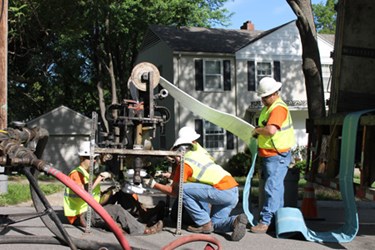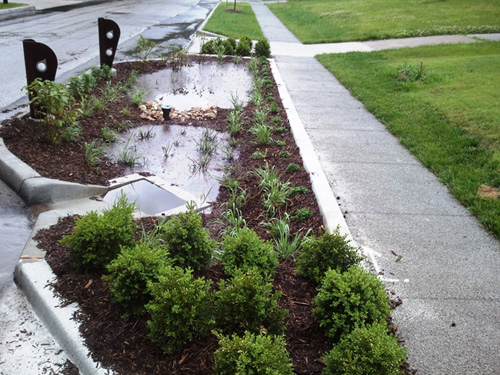Kansas City Boasts $5 Billion Overflow Prevention Program

By Laura Martin

Sanitary sewer overflows (SSOs) and combined sewer overflows (CSOs) are an increasing public health, environmental, and regulatory concern for U.S. municipalities. Seven hundred seventy-two cities in the U.S. have combined sewer systems, which are designed to discharge a mix of stormwater and untreated wastewater directly into nearby water bodies when the system exceeds capacity. In addition, the EPA estimates that there are at least 40,000 SSOs each year, which occur due to severe weather, improper system maintenance, and vandalism. The amount of CSOs and SSOs will likely continue to grow as urbanization and population increase.
The city of Kansas City, MO, is taking action now to prevent the problem from getting worse. They’ve committed to spending between $4.5 billion and 5 billion — the largest infrastructure investment in Kansas City history — on a 25-year overflow control program.
The city has 58 square miles of combined sewers and another 260 square miles of a separate sewer system. The collection system also includes six wastewater treatment plants and 46 pumping stations. But Kansas City’s system is out of date — sections were built before the Civil War — and the result is over 6.4 billion gallons of sewer overflow per year.
“Pre-Civil War they really didn’t anticipate the volume of stormwater and wet-weather flow that would be coming in,” said Andy Shively, engineering officer for Kansas City Water Services. “The sewers were not sized for that volume, and the stormwater has to go somewhere, so raw sewage gets into our local streams. It is critical that we solve this problem.”
The overflow control program is structured to reduce CSOs by 88 percent. It is the result of an EPA consent decree lodged in 2010, and is one of only a handful of federal consent decrees that mandate green infrastructure as part of overflow control measures. Municipalities in Washington, D.C.; Maryland; Ohio; and Kentucky agreed to take similar overflow prevention measures after EPA action, but none to the scale and expense of the Kansas City project.

“We wanted to be a national leader in green infrastructure,” said Shively. “We wanted to be a model for the rest of the nation.”
The first 10 years of the program are focused on reducing the wet-weather flow that gets into the sewer systems. The second will focus on larger infrastructure improvements.
“In a nutshell, we wanted to fix what we had first to reduce the problem before we need to solve it,” explained Shively.
Since the program kicked off four years ago, $122 million worth of updates have already been completed. These include 111 miles of sewer investigated and cleaned, 6.85 miles of pipe replaced or rehabilitated, and 52 flow meters installed
One hundred thirty-five green infrastructure installations were also installed as part of the program, all within the public right of way. These installations not only improve runoff but raise awareness about the issue.
“It takes a solution that is normally underground and brings it to the surface,” said Shively. “Seeing green infrastructure prompts people to ask questions and learn about the problems were are facing. We also have extensive public outreach program as part of the Overflow Control Program.”
Measures to reduce inflow — stormwater that is directly piped into a sewer system from runoff — and infiltration, which is water that gets into the sewer system through open joints, cracks, and breaks in the pipes, are also in the works throughout the community.
A combination of public and private approaches is more effective than a public sewer system rehabilitation alone, said Shively.
“We need to work together collaboratively to fix this issue,” he said. “Eighty-two percent of voters voted in favor of wastewater bond authorization to this project. We need to solve this problem with the support of the entire community.”
